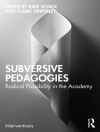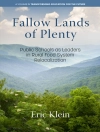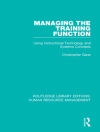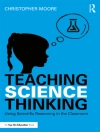‘The Parallel Curriculum Model helps teachers not only strengthen their knowledge and pedagogy, but also rediscover a passion for their discipline based on their deeper, more connected understanding. Our students think critically and deeply at a level I have never before witnessed.’
—Tony Poole, Principal
Sky Vista Middle School, Aurora, CO
‘What makes this book unique is its insistence on the development of conceptual understanding of content and its focus on the abilities, interests, and learning preferences of each student.’
—H. Lynn Erickson, Educational Consultant
Author of Stirring the Head, Heart, and Soul
‘The approach honors the integrity of the disciplines while remaining responsive to the diversity of learners that teachers encounter.’
—Jay Mc Tighe, Educational Consultant
Coauthor of Understanding by Design
Engage students with a rich curriculum that strengthens their capacity as learners and thinkers!
Based on the premise that every learner is somewhere on a path toward expertise in a content area, this resource promotes a curriculum model for developing the abilities of all students and extending the abilities of students who perform at advanced levels.
The Parallel Curriculum Model (PCM) offers four curriculum parallels that incorporate the element of Ascending Intellectual Demand to help teachers determine current student performance levels and develop intellectual challenges to move learners along a continuum toward expertise. Updated throughout and reflecting state and national content standards, this new edition:
- Helps teachers design learning experiences that develop Pre K–12 learners′ analytical, critical, and creative thinking skills in each subject area
- Provides a framework for planning differentiated curriculum
- Includes examples of curriculum units, sample rubrics, and tables to help implement the PCM model
The Parallel Curriculum effectively promotes educational equity and excellence by ensuring that all students are adequately challenged and supported through a multidimensional, high-quality curriculum.
İçerik tablosu
Preface to the Second Edition
Acknowledgments
About the Authors
1. The Rationale and Guiding Principles for an Evolving Conception of Curriculum
A Word to New Readers About This Chapter
Reasons for Another Curriculum Model
Theoretical and Research-Based Underpinnings of the Parallel Curriculum Model
2. An Overview of the Parallel Curriculum Model
A Look at the Four Curriculum Parallels
The Core Curriculum
The Curriculum of Connections
The Curriculum of Practice
The Curriculum of Identity
Curriculum Combining the Four Parallels
Planning Quality Curriculum
Ensuring Fidelity to the Parallel Curriculum Model
Looking Ahead in the Book
3. Thinking About the Elements of Curriculum Design
The Big Picture
Planning Quality Curriculum
Some Key Components of Curriculum Design
Components of a Comprehensive Curriculum Plan
Content/Standards
Assessment
Introductory Activities
Teaching Methods
Learning Activities
Grouping Strategies
Products
Resources
Extension Activities
Differentiation Based on Learner Need (Including AID)
Lesson and Unit Closure
Remodeling a Unit Using the Comprehensive Curriculum Framework: One Teacher′s Approach
Looking Back and Ahead
4. The Core Curriculum Parallel
Why Four Approaches to Curriculum Design? Isn′t One Good Enough?
What Is ‘Core’ in the Core Curriculum Parallel?
How Are the Key Curriculum Components Reconfigured to Achieve the Goals of the Core Curriculum Parallel?
Revising the Remaining Curriculum Components to Address the Goals of the Core Curriculum Parallel
Using the Goals of the Core Curriculum Parallel and Key Curricular Elements for Lydia Janis′s Civil War Unit
Looking Back and Ahead
5. The Curriculum of Connections Parallel
What Is the Curriculum of Connections?
The Purpose of a Curriculum of Connections: Why Should a Teacher Emphasize Connections and Relationships?
The Curriclum of Connections: When Should I Use This Parallel?
The Characteristics of the Curriculum Components Within the Curriculum of Connections
Reconfiguring Other Curriculum Components for the Curriculum of Connections
An Example of the Curriculum of Connections Using the Civil War Unit
Looking Back and Ahead
6. The Curriculum of Practice Parallel
What Does It Mean to ‘Practice’ in a Curriculum?
Why Does It Matter to Have Students Engage in the Curriculum of Practice?
Key Features of the Components of Curriculum in the Curriculum of Practice?
An Example of the Curriculum of Practice Using Lydia′s Civil War Unit
Looking Back and Ahead
7. The Curriculum of Identity Parallel
What Does Identity Mean in the Curriculum of Identity?
Why Should We Be Concerned About a Student′s Identity?
What Are the Key Features and Characteristics of Curriculum Components Within the Curriculum of Identity?
An Example of the Curriculum of Identity Using Lydia′s Civil War Unit
Looking Back and Ahead
8. Ascending Intellectual Demand in the Parallel Curriculum Model: The Journey Toward Expertise
Ascending Intellectual Demand: The Path to Expertise
Planning Backwards From Expertise
Understanding the AID Continuum
On the Continuum Novice
On the Continuum Apprentice
On the Continuum Practitioner
On the Continuum Expert
Transitions on the AID Continuum
A Model for Planning Student Movement Along the AID Continuum
The Novice in Science
The Apprentice in Science
The Practitioner in Science
The Expert in Science
Planning the Path Toward Expertise in Science
The Novice in Mathematics
The Apprentice in Mathematics
The Practitioner in Mathematics
The Expert in Mathematics
The Novice in History
The Apprentice in History
The Practitioner in History
The Expert in History
The Novice in English and Language Arts
The Apprentice in English and Language Arts
The Practitioner in English and Language Arts
The Expert in English and Language Arts
Using the AID Continuum
Resource A: Teaching Resources for Chapter 8
References
Index
Yazar hakkında
Marcia B. Imbeau is an associate professor at the University of Arkansas, Fayetteville, where she teaches graduate courses in gifted education and elementary education. She is actively involved with university/public school partnerships and teaches in a local elementary school as a university liaison. Her professional experience includes serving as a field researcher for the National Research Center on the Gifted and Talented, elementary teaching in the regular classroom, teaching in programs for the gifted, and coordinating university-based and Saturday programs for advanced learners.Imbeau has been a board member for the National Association for Gifted Children and has served as a governor at-large for the Council for Exceptional Children – The Association for the Gifted Division. She is a past president of Arkansans for Gifted and Talented Education, a state organization that supports appropriate instructional services for all students. Working with special education colleagues, she has coauthored How to Use Differentiated Instruction With Students with Disabilities in the General Education Classroom as a service publication for the Council for Exceptional Children. Her most recent publication may be found in Designing Services and Programs for High-Ability Learners.Imbeau is a member of the ASCD’s Differentiated Instruction Cadre, which provides support and training to schools interested in improving their efforts to meet the academically diverse learning needs of their students.












